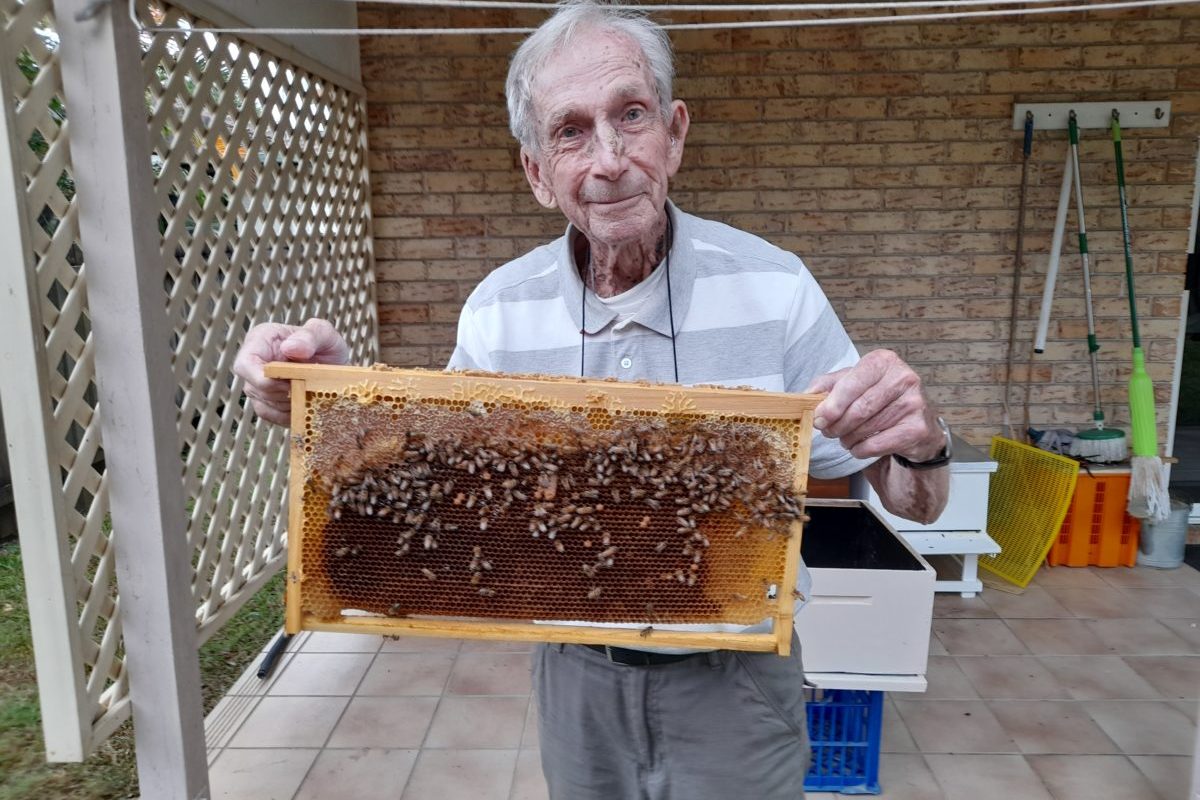‘I was a bit of a kamakazi when I was young” laughs Peter. “I used to climb high into the trees and cut branches with my tomahawk to reach the beehives”. And tending bees has been a hobby for Peter ever since.
Still able to live in the home he has lived in for 31 years with Pat, his wife of 71 years, Peter continues to build bee-hives and encourage the healthy continuation of these little insects. As pollinators, bees play a vital role in every aspect of the ecosystem. They support the growth of trees and flowers which serve as food and shelter for other creatures.
A builder by trade, he certainly has the knowledge and equipment to create the boxes needed by the bees, while his enthusiasm for his hobby has taught him all there is to know about these amazing little creatures.
With his smoker on standby to subdue the bees should it be necessary, Peter opens one of the hives to proudly show-off over 40 000 fluttering bees hard at work raising the young and making delicious honey.
“Every hive has one queen bee, a number of drones for procreation and thousands of female worker bees who spend their lives gathering pollen to feed the young and make honey.
“Worker bees can live for six weeks if they are working at maximum capacity but can hibernate for up to six months if they are waiting for a new queen to hatch and mature so that the hive can become active. To create a new queen in a hive, eggs are laid in 4-5 Queen cells.
“These are larger than the normal cells and are dome-shaped to accommodate the queen, who is twice the size of worker bees. The queen bee eggs are feed royal jelly which ensures the quicker growth and development of the egg and produces the larger-size bee. A queen bee emerges after 17 days whereas worker bees take 21 days to hatch.
“The first queen bee to emerge then destroys the other queen bee eggs to ensure there is no competition in the hive. It is a miracle of nature how these hives work and fascinating to have as a hobby”.
Peter spends much of his time in his workshop.
“I think I am one of the best customers at the local op-shops as I buy a lot of wood from them. Then I build a new hive body, which makes up the “living quarters” of the hive. I then make the frames for the racks out of wood and have about 60 frames ready for future use as my bee population grows. When the bees start sitting outside the box, I know I need to put out another box for a new hive. If I don’t monitor that, the hive will send out a swarm to find a tree or other additional premises.”
Peter says being able to stay in his own home has allowed for him to continue with his hobby. With a little help from Suncare who assist with services that includes domestic assistance, Peter manages well.
“I wouldn’t be without Suncare. I cannot speak of them highly enough.”













